We got serious on Crunchbase and sampled 60 Series A company blogs in 2023 to find out who’s pulling ahead on content early.
It turns out there’s a huge disparity between companies. It turns out that content marketing is a “must-have” for some, while it’s still on the to-do lists of others.
Who’s right? Does YOUR company need content marketing at this stage? How much? And what results should you expect?
We’re breaking down what’s out there in the wild — from industry to industry. Who’s killing it? Who’s ignoring content?
So what should a Series A blog look like?
The Industries of Series A Blogs
We sampled 60 companies from multiple industries, trying to get coverage across multiple industries. In the end, we found series A companies from 14 industries. They were:

More Series A Companies with Blogs are B2B-Oriented
It shouldn’t be surprising that with more complicated value propositions and buying committees with multiple members, B2B companies are more proactive at the Series A stage in offering blog content for potential buyers.
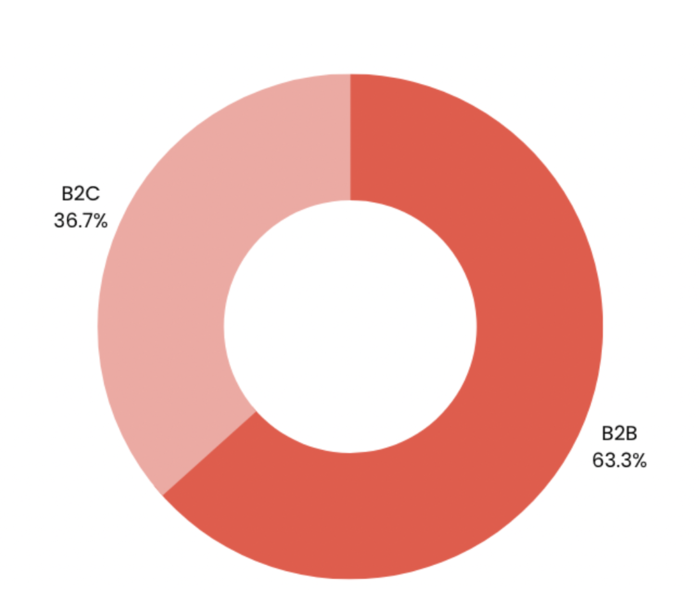
Less than Half of Series A Companies Have a Content Strategy
With or without a blog, most Series A companies do not have an active content strategy (defined by traffic of 4,000 or more monthly website views).
And we agree that’s sometimes a fine plan. For example, no-strategy may be a good strategy for very technical B2B industrial manufacturers, government contractors, etc.
They’re highly enterprise-oriented. They may seek just one or two customers.
Traffic schmaffic. They’re likely producing internal sales content that doesn’t live on their website or attract many of us non-buyers.
But for the majority of B2B companies, more traffic means more educated buyers, more brand recognition, and more trust (which all lead to more sales).

B2C Dominates Content Strategy
While the B2B blogs we looked at were more likely to produce any content, B2C blogs seemed to better strategize how their content got seen.
For example, B2Cs were more likely to win traffic and have active, engaged blogs with over 4,000 monthly views of blog content.
B2B blogs may simply maintain obscure topic areas and hand-distribute content to prospects in “dark” channels rather than aim for general traffic.
However, more often, the B2B companies are simply publishing internal promotion, like press releases, and non-optimized content without a clear distribution plan. Their content wins few eyeballs and reinforces the myth that content is an expensive channel with low ROI.
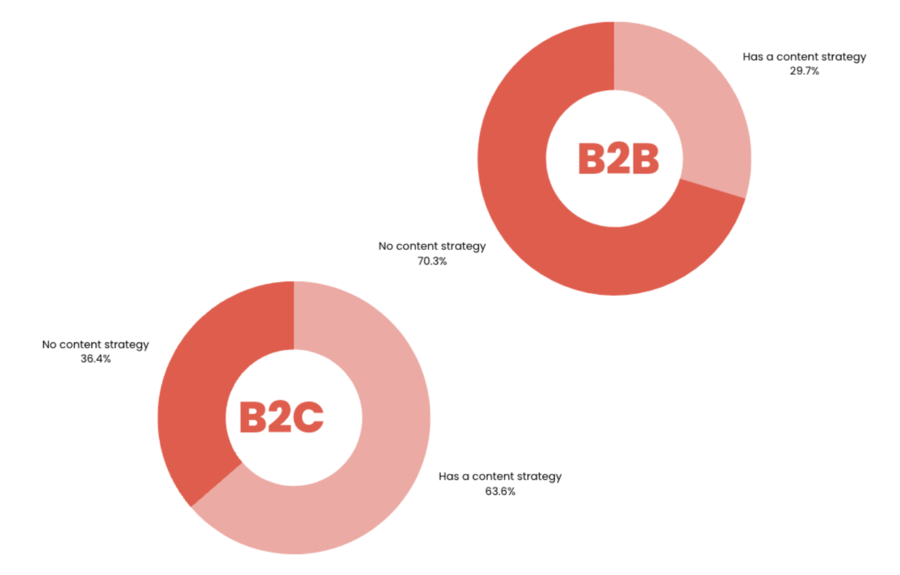
E-Learning and Project Management are Content Winners
Congrats to these B2B heavy hitters. While B2C blogs are more likely to strategize for content as a growth channel, that’s not always the case. In fact, some industries are bullish on content in the B2B space, with e-learning and project management tools leading the way.
Aerospace, drones, and cleantech are least likely to capitalize on their content marking and work to grow their blogs.
On these bars, light orange represents companies with a content strategy. Dark orange represents companies that have no content strategy.
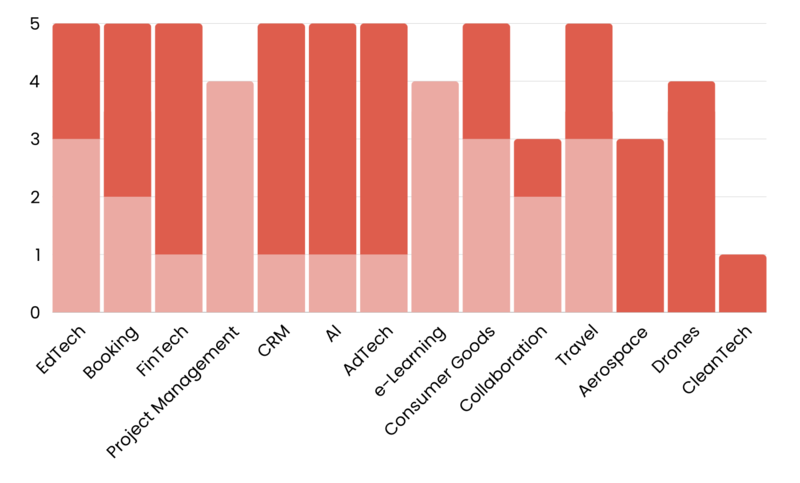
Who’s Knocking it Out of the Park on Content?
Some established brands are hitting it out of the park for traffic alone. In fact, we took these five companies OUT of our averages to get a realistic view of blog traffic for series A brands. Those brands were:
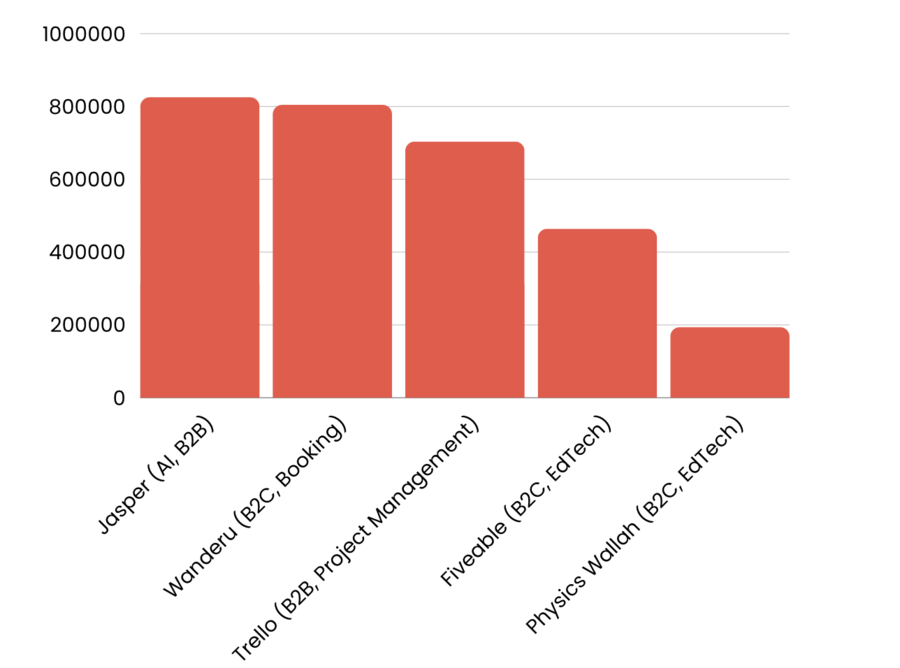
Big Players are Skewing the View of Series A Players
These five companies grossly out-traffic the average series A for traffic. With them, the average series A blog has an average of 135,765 monthly visitors.
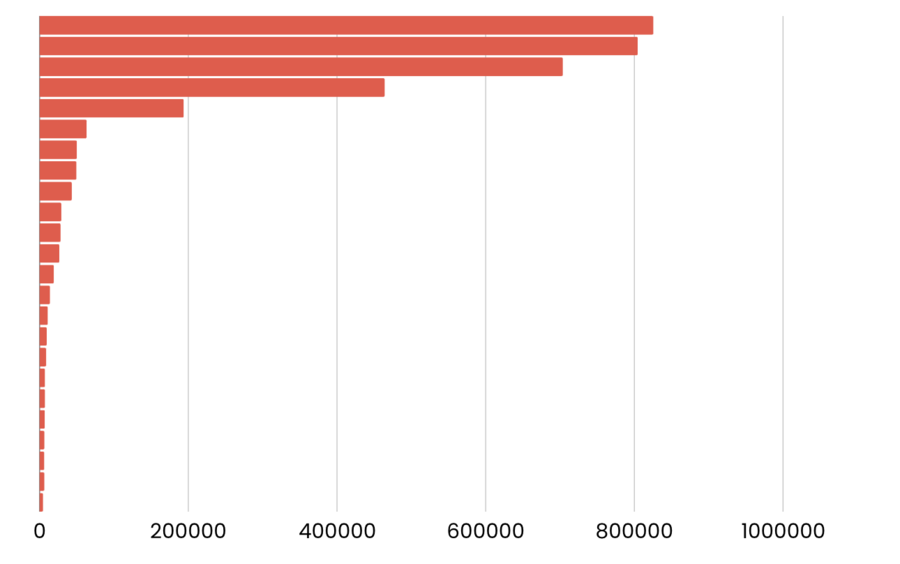
More Realistic Averages are Easily Attainable for Companies with New Blogs
Without them, the average monthly traffic is 19,167.
That’s a very realistic blog traffic goal that even new websites can achieve in year one.
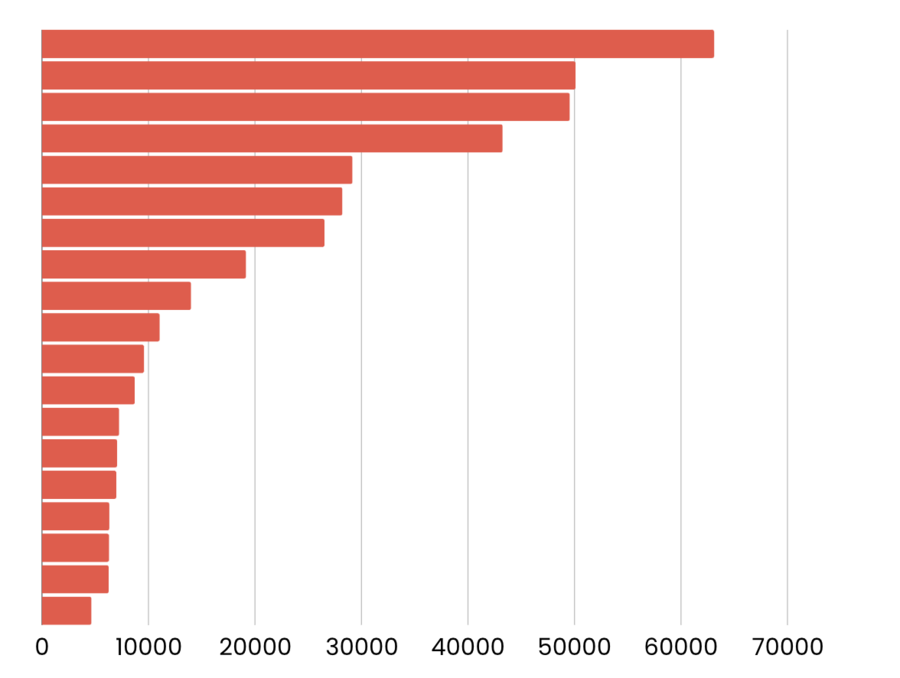
Top Posts Average Under 1,000 Monthly Views
Here’s a look at the traffic and number of ranking secondary keywords for the top traffic articles, averaged across the 19 companies with a content strategy (excluding the top 5 outliers).
Note that just 2 of the top 5 companies have traffic on their top article garnering more than 1,000 monthly views. That’s incredibly low (but might be a great goal if they’re all targeted, enthusiastic potential clients).
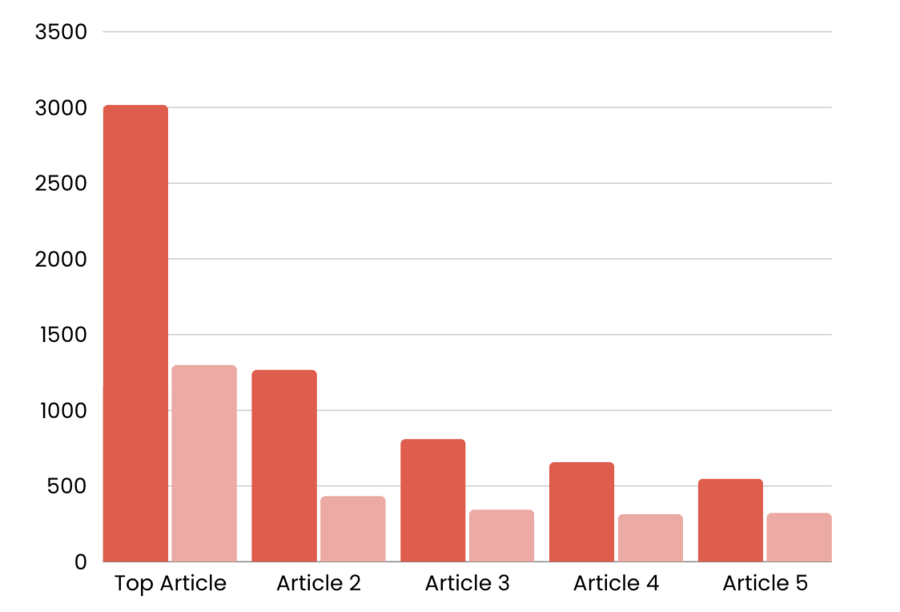
What Does it All Mean?
Want to get ahead? Here’s what you should take from this data:
- New creators should side-step big players. Invest in topic clusters to differentiate, not imitate. Blue ocean content wins.
- Are you wondering what your benchmarks should be? Companies that have committed to their blogs weekly for about a year average about 20K in monthly traffic. That’s a great place to start for low-DA startups.
- Get on Kefi’s calendar for a production partner focused on you.





